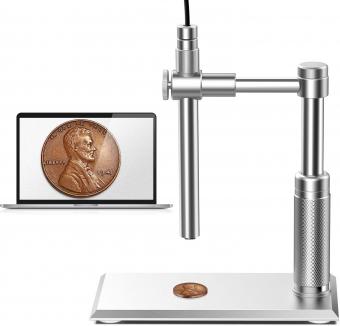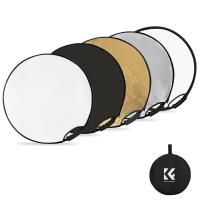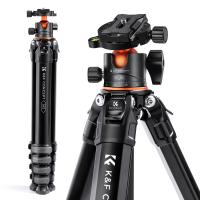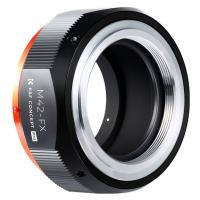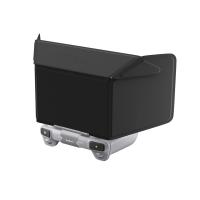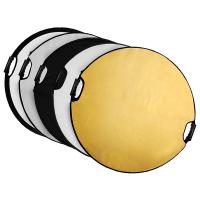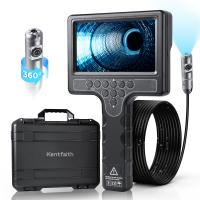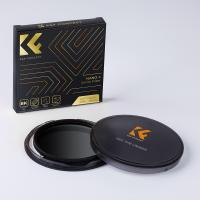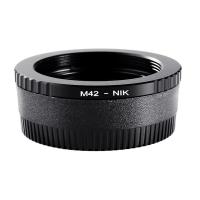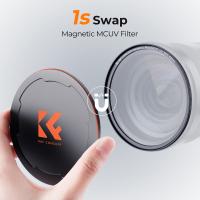What Kind Of Microscope Can See Sperm ?
A compound microscope can be used to see sperm.
1、 Compound microscope
A compound microscope is the type of microscope that can be used to see sperm. A compound microscope is a versatile and widely used microscope that utilizes multiple lenses to magnify the image of the specimen. It consists of an objective lens, which is closest to the specimen, and an eyepiece lens, which is closest to the observer's eye.
When examining sperm under a compound microscope, a small sample is typically placed on a glass slide and covered with a coverslip. The objective lens is then adjusted to focus on the sperm cells, allowing for detailed observation and analysis. The magnification power of a compound microscope can vary, but it is typically sufficient to visualize sperm cells, which are approximately 5-6 micrometers in length.
It is important to note that the use of a compound microscope to observe sperm is a common practice in reproductive medicine and research. However, advancements in technology have also led to the development of more specialized microscopes, such as phase-contrast microscopes and fluorescence microscopes, which can provide additional information about sperm morphology and function.
These advanced microscopes utilize different techniques to enhance the contrast and visibility of sperm cells, allowing for more detailed analysis. For example, phase-contrast microscopy can reveal subtle structural details of sperm cells, while fluorescence microscopy can be used to label specific components of the sperm for visualization.
In conclusion, while a compound microscope is the primary tool used to observe sperm, there are also more specialized microscopes available that can provide additional insights into sperm morphology and function.

2、 Phase-contrast microscope
A phase-contrast microscope is a type of microscope that can be used to visualize and study sperm cells. This type of microscope is particularly useful for observing transparent or unstained specimens, such as living cells, which makes it ideal for studying sperm cells.
The phase-contrast microscope works by exploiting the differences in refractive index between the various components of a specimen. This allows for the visualization of subtle differences in density and thickness, which would otherwise be difficult to observe using other types of microscopes. By using a special condenser and objective lens, the phase-contrast microscope enhances the contrast between the sperm cells and their surrounding medium, making them more visible and easier to study.
It is important to note that while a phase-contrast microscope can visualize sperm cells, it does not provide detailed information about their structure or function. For a more comprehensive analysis, other techniques such as staining or electron microscopy may be required.
In recent years, advancements in microscopy techniques have allowed for even more detailed visualization and analysis of sperm cells. For example, high-resolution microscopy techniques, such as super-resolution microscopy, have been used to study the ultrastructure of sperm cells at the nanoscale level. Additionally, techniques such as fluorescence microscopy and confocal microscopy have been employed to study specific components or processes within sperm cells, such as DNA fragmentation or mitochondrial activity.
Overall, while a phase-contrast microscope is a valuable tool for visualizing sperm cells, it is important to consider the specific research question or objective and choose the appropriate microscopy technique accordingly.

3、 Differential interference contrast microscope
A differential interference contrast microscope (DIC microscope) is a type of light microscope that can be used to visualize and study sperm cells. This microscope utilizes a specialized optical technique called differential interference contrast (DIC) imaging, which enhances the contrast and detail of transparent specimens, such as sperm cells.
DIC microscopy works by splitting a beam of light into two paths and then recombining them. As the light passes through the specimen, it encounters variations in refractive index, which causes differences in the speed and direction of the light waves. These differences are then converted into contrast by the microscope, resulting in a three-dimensional image of the specimen.
When it comes to studying sperm cells, a DIC microscope offers several advantages. It provides high-resolution images with excellent contrast, allowing researchers to observe the morphology, motility, and other characteristics of sperm cells in great detail. This can be particularly useful in fertility clinics and research laboratories, where the assessment of sperm quality is crucial for diagnosing infertility issues and developing effective treatments.
It is important to note that while a DIC microscope can provide valuable information about sperm cells, it is not the only tool used in sperm analysis. Other techniques, such as phase-contrast microscopy, fluorescence microscopy, and electron microscopy, may also be employed depending on the specific research or clinical needs.
In recent years, advancements in microscopy technology have led to the development of more sophisticated imaging techniques, such as super-resolution microscopy and digital holography microscopy. These techniques offer even higher resolution and more detailed imaging capabilities, potentially providing new insights into the structure and function of sperm cells. However, DIC microscopy remains a widely used and valuable tool for studying sperm cells due to its accessibility, ease of use, and reliable results.

4、 Fluorescence microscope
A fluorescence microscope is the type of microscope that can be used to see sperm. This type of microscope utilizes fluorescence imaging techniques to visualize specific structures or molecules within a sample. In the case of sperm, a fluorescent dye or probe can be used to label specific components of the sperm, such as the DNA or proteins, making them visible under the microscope.
Fluorescence microscopy offers several advantages when it comes to studying sperm. Firstly, it allows for the visualization of specific structures or molecules within the sperm, providing detailed information about their localization and distribution. This can be particularly useful in studying sperm morphology and assessing any abnormalities or defects.
Additionally, fluorescence microscopy can also be used to study sperm function. By labeling specific proteins or molecules involved in sperm motility or fertilization, researchers can gain insights into the mechanisms underlying these processes. This can be crucial in understanding infertility issues or developing new strategies for assisted reproductive technologies.
Moreover, recent advancements in fluorescence microscopy techniques have further enhanced its capabilities in studying sperm. For example, super-resolution microscopy techniques, such as stimulated emission depletion (STED) microscopy or structured illumination microscopy (SIM), can achieve resolutions beyond the diffraction limit, allowing for even more detailed visualization of sperm structures.
In conclusion, a fluorescence microscope is the ideal tool for visualizing sperm due to its ability to label specific components and provide detailed information about sperm morphology and function. With the continuous advancements in fluorescence microscopy techniques, our understanding of sperm biology and reproductive health is constantly expanding.
















